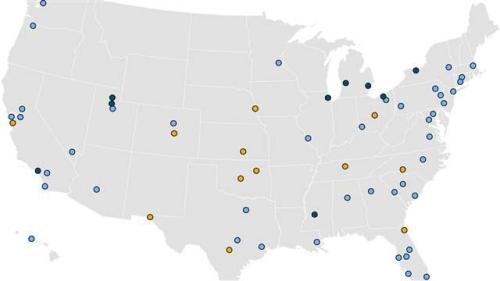Findings
An analysis of the labor market characteristics of the working-age limited English proficient (LEP) population in the United States and its largest metropolitan areas reveals that:
- Nearly one in 10 working-age U.S. adults—19.2 million persons aged 16 to 64—is considered limited English proficient. Two-thirds of this population speaks Spanish, but speakers of Asian and Pacific Island languages are most likely to be LEP. The vast majority of working-age LEP adults are immigrants, and those who entered the United States more recently are more likely to be LEP.
- Working-age LEP adults earn 25 to 40 percent less than their English proficient counterparts. While less educated overall than English proficient adults, most LEP adults have a high school diploma, and 15 percent hold a college degree. LEP workers concentrate in low-paying jobs and different industries than other workers.
- Most LEP adults reside in large metropolitan areas, but their numbers are growing fastest in smaller metro areas. Eighty-two percent of the working-age LEP population lives in 89 large metropolitan areas, and 10 metro areas account for half of this population. Large immigrant gateways and agricultural/border metro areas in California and Texas have the largest LEP shares of their working-age populations. Smaller metro areas such as Cape Coral, Indianapolis, and Omaha experienced the fastest growth in LEP population between 2000 and 2012. Los Angeles was the only metro area to experience a decline.
- Educational attainment and the native languages of LEP adults vary considerably across metro areas. The share who have completed high school ranges from 33 percent in Bakersfield to 85 percent in Jacksonville. Spanish is the most commonly spoken non-English language among LEP adults in 81 of the 89 large metro areas, but the share varies from a low of 5 percent in Honolulu to 99 percent in McAllen.
- Most working-age LEP people are in the labor force. A majority across all 89 large metro areas is working or looking for work, and in 19 metro areas, at least 70 percent are employed. Workers proficient in English earn anywhere from 17 percent to 135 percent more than LEP workers depending on their metro location.
English proficiency is an essential gateway to economic opportunity for immigrant workers in the United States. Yet access to acquiring these skills is persistently limited by a lack of resources and attention. Increasing investment in adult English instruction—through more funding, targeted outreach, and instructional innovations—would enhance the human capital of immigrants that could lead to more productive work and better outcomes for their children. Given the large number of LEP workers in the United States and the fact that virtually all of the growth in the U.S. labor force over the next four decades is projected to come from immigrants and their children, it is in our collective interest to tackle this challenge head on.
The Brookings Institution is committed to quality, independence, and impact.
We are supported by a diverse array of funders. In line with our values and policies, each Brookings publication represents the sole views of its author(s).










